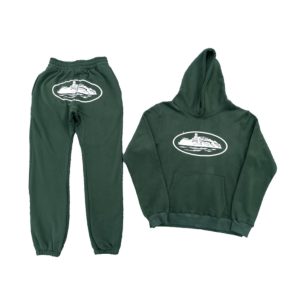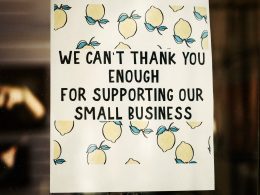More Than Just Apparel
The Corteiz Tracksuit has emerged as one of the most recognizable pieces in contemporary streetwear. While it functions as clothing, its significance extends far beyond fabric and stitching. For many, it represents a cultural identity, a marker of exclusivity, and a reflection of the shifting dynamics between underground fashion communities and mainstream global trends. Understanding the rise of the Corteiz tracksuit requires a look into the brand’s philosophy, the streetwear ecosystem it inhabits, and the social narratives tied to its popularity.
The Origins of Corteiz: Building a Brand Through Scarcity and Authenticity
Corteiz (often stylized as “CRTZ”) was founded in London by Clint419, a designer known for rejecting traditional fashion industry norms. Unlike legacy sportswear companies that rely on mass production, Corteiz deliberately limits its product releases. This strategy of scarcity has created a sense of urgency and exclusivity around its items, particularly the tracksuit.
Instead of traditional advertising, the brand relies on grassroots promotion: cryptic social media posts, unannounced pop-ups, and “drops” that sell out within minutes. The Corteiz tracksuit benefits from this approach by becoming not just clothing but an achievement—owning one signals that the wearer is connected to a specific cultural circle that values authenticity over mass appeal.
Design Philosophy: Utility Meets Aesthetic Edge
The Corteiz tracksuit is not an accidental success; its design reflects careful consideration of both function and style. Typically constructed from heavyweight cotton or poly-blend materials, it balances comfort with durability. The tracksuit often features subtle yet distinctive branding—Corteiz’s Alcatraz logo is small but instantly recognizable to those in the know.
Beyond branding, details such as reinforced stitching, tapered fits, and practical pocket placements show that the garment is built for everyday wear rather than runway aesthetics. Yet its silhouette is modern, leaning slightly slimmer than traditional athletic tracksuits, making it suitable for both street settings and casual social occasions.
Cultural Impact: From London Streets to Global Recognition
Streetwear is often rooted in geography, and the Corteiz tracksuit’s identity is inseparable from London’s urban landscape. Its early adopters were locals who resonated with the brand’s rebellious, anti-establishment messaging. Over time, images of celebrities and influencers wearing Corteiz pieces helped the brand transcend its niche beginnings.
However, the tracksuit has retained its underground credibility. Unlike brands that dilute their image when they gain popularity, Corteiz has maintained control over its distribution, reinforcing the idea that its items are earned rather than simply purchased. This controlled scarcity has turned the tracksuit into a cultural currency—people recognize its value because access to it is limited.
The Psychology of Exclusivity: Why Scarcity Drives Demand
One of the defining aspects of the Corteiz tracksuit’s appeal is psychological. Scarcity increases perceived value. Limited drops mean potential buyers often face intense competition to secure a piece. That competitive process makes ownership feel like a personal win, and the rarity makes the tracksuit a visible marker of cultural alignment.
Furthermore, Corteiz leverages what can be described as “anti-marketing.” By avoiding mass advertising and refusing to conform to mainstream retail strategies, the brand creates an aura of authenticity. For many consumers, wearing a Corteiz tracksuit is not simply about fashion; it’s about aligning with an ideology that resists commercialization and celebrates subcultural roots.
Material Quality and Craftsmanship: A Key Factor in Longevity
While hype plays a major role, the tracksuit’s continued demand would not exist without quality to support it. Corteiz garments are known for their durability and attention to detail. Heavy fabrics ensure that they withstand frequent use, while clean stitching reduces wear and tear. The combination of comfort, resilience, and aesthetic consistency has made these tracksuits not only status symbols but also reliable everyday pieces.
Comparisons with Legacy Sportswear Brands
Historically, tracksuits were dominated by brands like Adidas, Nike, and Puma. These companies focused on athletic performance and mass appeal. Corteiz by contrast, has positioned its tracksuit as a symbol of cultural identity rather than pure sport. Its small-batch production contrasts sharply with the global supply chains of legacy brands. As a result, wearing Corteiz communicates individuality, while mainstream sportswear often suggests universal accessibility.
Community and Identity: Wearing the Corteiz Tracksuit
For many, the Corteiz tracksuit is a form of social communication. It signals belonging to a subculture that values exclusivity, underground trends, and street authenticity. Unlike high-fashion luxury brands, Corteiz appeals to people who see themselves as outside of traditional fashion hierarchies. This connection to community makes the tracksuit more than a garment—it becomes a badge of shared values.
Resale Culture: The Tracksuit as a Commodity
Because each drop is limited, a thriving resale market exists for Corteiz tracksuits. Prices often rise significantly above retail, reflecting demand that far outpaces supply. Some critics argue this fuels artificial hype, while others view it as a natural extension of streetwear’s economics. Regardless of opinion, the resale phenomenon reinforces the idea that Corteiz pieces—especially tracksuits—are investments, both financially and culturally.
Global Expansion Without Losing Roots
As international awareness of Corteiz grows, the brand faces a challenge: expanding its audience without losing its underground credibility. So far, Corteiz has resisted mass production and avoided partnerships that could compromise its identity. The tracksuit continues to be released in small quantities, maintaining the tension between accessibility and exclusivity that defines its allure.
Sustainability and Ethical Considerations
In a fashion industry increasingly scrutinized for environmental impact, Corteiz’s limited production model can be seen as more sustainable than large-scale operations. By producing only what will sell, the brand reduces waste associated with unsold inventory. However, because of its secrecy, little is publicly known about its supply chain ethics or manufacturing practices—something future-conscious consumers may question as the brand grows.
Future Outlook: Will the Corteiz Tracksuit Remain Iconic?
Trends in streetwear shift rapidly, but certain pieces achieve longevity by transcending hype cycles. The Corteiz tracksuit has the potential to remain a cultural staple if it continues to embody authenticity, exclusivity, and quality craftsmanship. Its success will depend on whether the brand can maintain its underground ethos while responding to global demand.
More Than a Fashion Item
The Corteiz Cargos is not just a piece of clothing—it is a representation of modern streetwear’s values: scarcity, cultural identity, and resistance to mass-market conformity. Its rise shows how a small, independent brand can influence global fashion without sacrificing its core principles. Whether worn as a daily uniform or kept as a prized collectible, the Corteiz tracksuit reflects more than style; it symbolizes a connection to a movement that values authenticity over mainstream validation.












